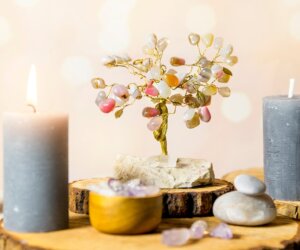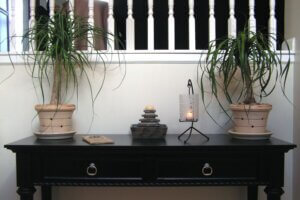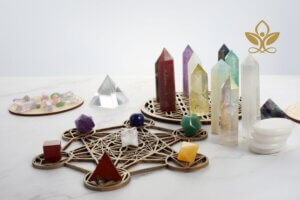What does it mean to design compassion into your home? Designing a home environment with compassion naturally has a significant impact on reducing stress levels. Not surprisingly, when we think of compassion, we often think about how we interact with others. However, when we design compassion into our home it also contributes to our overall well-being. To design compassion in home means creating spaces that are warm, inviting, and nurturing.
Of course, it also means considering the needs and comfort of all those who inhabit the space. By prioritizing compassion in our home design, we can create a sanctuary that promotes relaxation, connection, and ultimately helps to lower stress. In this article, we explore surprisingly easy ideas to design compassion into your home.
How to Design Compassion Into Your Home
1. Choosing Peaceful and Soothing Colors to Design Compassion into Your Home
Color significantly impacts our emotions and greatly influences the overall feeling of a space. So, if you want to design compassion into your home, choose colors that promote relaxation and calmness. We provide you with a few relaxing color schemes below but don’t be afraid to choose your own schemes that appeal to you. In doing so, you and your family will find soothing comfort from the new, more compassionate space.
Want A Low-Stress Home? How to Design Compassion Into Your Home Share on Xa. Soft Blues and Greens:
These colors are known for their calming and soothing effects. Shades of blue, such as sky blue or sea-foam green, creates a sense of tranquility and promotes a peaceful a feeling in bedrooms, living rooms, or bathrooms.

b. Neutral Earth Tones:
Natural, earthy colors like beige, taupe, and warm grays give you a feeling of earthly grounding. These colors work well in any room. Of course, you may also use pops of color through accessories or artwork.

c. Soft Pastels:
Pale shades of pink, lavender, or mint green give you a naturally gentle and serene feeling. These colors are particularly suitable for bedrooms or meditation spaces.
However, remember to choose personal preferences and the overall mood you want to create in each room. Experiment with different color combinations and find the ones that resonate with you the most.

2. The Power of Light is a Natural Way to Design Compassion
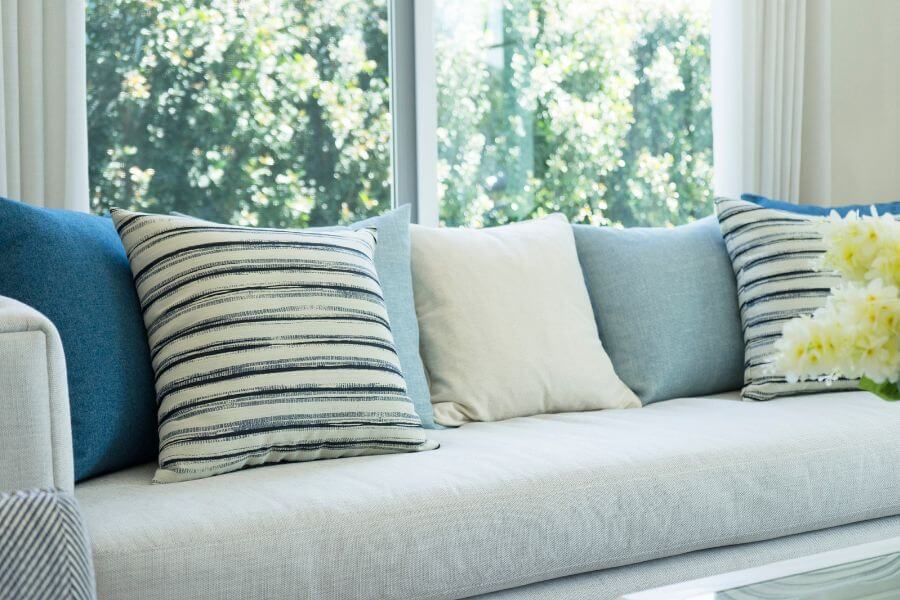
Our well-being actually depends on natural light. It not only enhances the visual appeal of a space but also positively impacts our mood and overall health. To maximize the amount of natural light in your home, consider the following tips:
a. Keep Windows Clear:
Remember that heavy curtains or blinds block natural light. But, don’t throw them away! Instead, simply add a lining of sheers under those light blocking curtains or sheers handing over the blinds. By using this layering technique, you give yourself options for day and night use. This is a great way to design compassion into your home living spaces!
b. Use of Mirrors:
Strategically placing mirrors opposite windows can help reflect natural light and create the illusion of a brighter and more spacious room.

c. Skylights and Light Tubes:
If possible, consider installing skylights or light tubes to bring in additional natural light, especially in areas with limited access to windows.

3. Natural Elements to Design Compassion into Your Home
Bringing the outdoors in is an effective way to create a peaceful and soothing home. Nature has a calming effect on our minds and bodies, and using natural elements creates a sense of harmony and tranquility. Here are some ideas for using natural elements into your home:
a. Indoor Plants:
Adding plants to your living spaces not only enhances the aesthetic appeal but also improves air quality and reduces stress. Choose from a variety of plants, such as snake plants, Chinese evergreens, or aloe vera, which are known for their low maintenance and air-purifying properties.

b. Natural Materials:
Some natural selections include furniture, flooring, and accessories made from materials like wood, bamboo, rattan, or stone. These materials add warmth and texture to a space and create a connection to the natural world.

c. Biophilic Design:
Biophilic design is a concept that seeks to incorporate elements of nature into the built environment. This type of design features living walls, water fountains, or a nature-murals to create a sense of compassion.

4. Artisanal Touches and Handcrafted Pieces

Avoid mass-produced items and instead, use artisanal touches and handcrafted pieces. In fact, this technique alone adds a unique and personal touch to your home. What’s more, handmade items have a sense of authenticity and craftsmanship that gives a sense of compassion and tranquility. Here are some ideas to use artisanal touches:
a. Original Ceramics are an Earthly Way to Design Compassion:
Display handcrafted ceramics, such as vases, bowls, or plates, as decorative accents in your home. These unique pieces add character and a sense of craftsmanship. What better way to add warmth and creative compassion to your home?

b. Natural Fiber Fabrics also Help Design Compassion:
Consider using handwoven textiles or fabrics with interesting patterns to add texture and visual interest to your home. These handmade pieces add a personal touch and create a cozy atmosphere. This is also a perfect way to add your personal heritage pieces from family and friends. There is nothing better than being surrounded by the compassion of your ancestors.
c. Support Local Artisans:
Take the time to explore local art markets or online platforms to discover unique and handcrafted pieces created by local artisans. By supporting local artists, you not only bring unique pieces into your home but also contribute to the preservation of traditional craftsmanship.
5. Design Compassion for Spiritual Healing
Designing a peaceful and soothing home also involves creating a space that feels safe and nurturing. Here are some tips to design compassion into your personal spaces:
a. Soft Lighting Helps You Design Compassion:
When you design your rooms, include options for warm and soft lighting options, such as dimmer switches, table lamps, or candles. Doing so is a great way to create a cozy and relaxing feeling full of compassion!

b. Comfortable and Cozy Furniture:
Invest in comfortable furniture pieces that invite relaxation and provide comforting support. With so much to choose from, you can find soft fabrics and cushioning to create a sense of coziness.

c. Design Compassion with Healing Scents:
Aromatherapy has a profound impact on our mood and well-being. Use essential oils or scented candles to create a calming and soothing atmosphere. Moreover, scents like lavender, chamomile, or peppermint all have wonderful relaxing qualities.

d. Soundscapes and Music:
Consider including soundscapes or soft music into your home to create a calming environment. Naturally, the sounds of nature, gentle instrumental music, or meditation tracks bring relaxation and tranquility.

6. Design Compassion by Embracing Gallons of Greenery
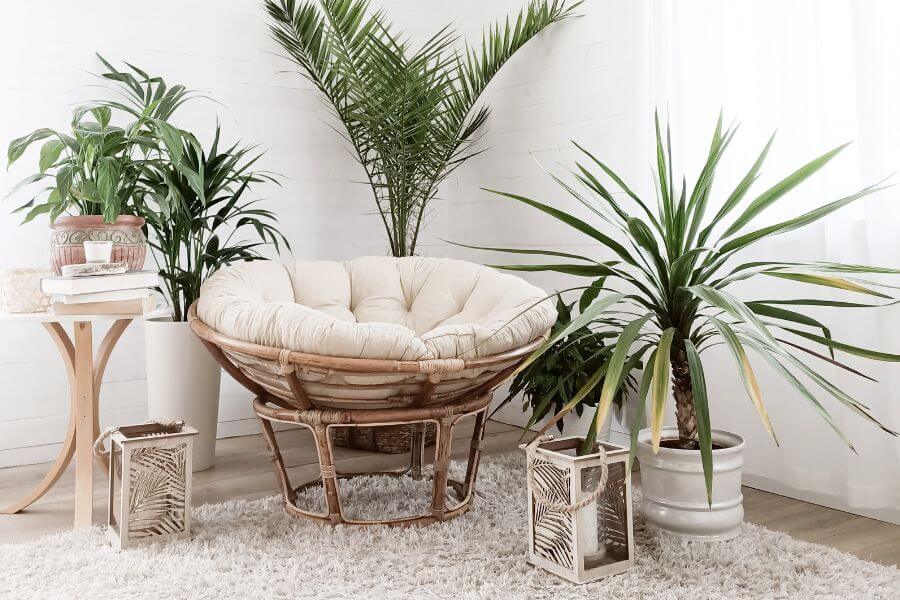
Plants not only enhance the appearance of your home but there are also many health benefits. The best part is, plants improve air quality. However, they also serve to reduce stress, and create a connection to nature. Here are some ideas to bring the outside in with greenery in your home:
a. Indoor Gardens:
Create an indoor garden by dedicating a specific area for plants. This can be a corner in your living room, a wall-mounted vertical garden, or a dedicated plant shelf.

b. Potted Plants:
Scatter potted plants throughout your home, paying attention to areas that need a touch of greenery. Plants like peace lilies, spider plants, or pothos are known for their air-purifying properties and are relatively easy to care for.
c. Herb Gardens:
Consider growing your own herbs in your kitchen or on your windowsill. Not only do they add a touch of greenery, but you’ll also have fresh herbs at your fingertips for cooking.

7. Designing a Backyard Zen Retreat
Creating a peaceful and soothing home extends beyond the four walls of your house. Your backyard can be transformed into a serene and calming space where you can unwind and connect with nature. Here are some ideas for designing a backyard Zen retreat:

a. Water Features:
Incorporate a water feature, such as a small pond, a fountain, or a waterfall, to create a calming soundscape. The sound of flowing water can induce a sense of peace and tranquility.

b. Seating Areas:
Create cozy seating areas where you can relax and enjoy the outdoors. Look around for comfortable outdoor furniture, hammocks, or even a swing.

c. Natural Landscaping:
Opt for native plants and low-maintenance landscaping to create a naturally beautiful and sustainable backyard. Emphasize greenery, use natural materials for pathways, and create a harmonious balance between hardscaping and softscaping.
d. Meditation Nooks:
Design a dedicated space for meditation or mindfulness practice in your backyard. This can be a secluded corner with a meditation cushion, a small altar, or a tranquil garden.

8. Home Organization and Decluttering
A cluttered and disorganized home can contribute to feelings of stress and overwhelm. Creating a peaceful and soothing home involves decluttering and organizing your space. Here are some tips to help you get started:
a. Declutter Regularly:
Take the time to declutter your home regularly. Get rid of items that no longer serve a purpose or bring joy. Donate or sell items that are in good condition but no longer needed.
b. Create Functional Storage Solutions:
Invest in storage solutions that help you keep your space organized and clutter-free. Use baskets, bins, or shelves to store items in a way that is both practical and visually appealing.

c. Minimalist Approach:
Embrace a minimalist approach to home decor and design. Focus on quality over quantity and choose items that bring meaning and purpose to your space.
d. One In, One Out Rule:
Implement the “one in, one out” rule to prevent clutter from accumulating. For every new item you bring into your home, consider removing an old or unused item.
9. Design Compassion With a Meditation Nook

Having a dedicated space for meditation or mindfulness practice can greatly enhance your well-being. Designing a tranquil and inviting meditation nook allows you to create a space that supports your practice. Consider the following elements:
a. Comfortable Seating:
Choose a comfortable cushion or chair that supports your posture during meditation. Consider adding blankets or pillows for added comfort.

b. Ambient Lighting:
Opt for soft and warm lighting options, such as string lights or a Himalayan salt lamp, to create a calming and peaceful atmosphere.
c. Aromatherapy:
Use essential oils or incense to create a soothing and relaxing scent in your meditation nook. Scents like sandalwood, frankincense, or lavender enhances the calming effect.

d. Personalized Touches:
Add personal touches to your meditation nook, such as meaningful artwork, inspirational quotes, or spiritual symbols that resonate with you.

10. Design Compassion into Your Restful Bedroom Retreat

Your bedroom should be a sanctuary for rest and rejuvenation. Designing a peaceful bedroom retreat involves creating a space that promotes relaxation and quality sleep. Consider the following tips:
a. Comfortable Bedding:
Invest in high-quality bedding, including a comfortable mattress, pillows, and soft sheets. Choose fabrics that feel good against your skin and promote a sense of coziness.

b. Calming Color Palette:
Include soft and soothing colors in your bedroom, such as muted blues, gentle grays, or earthy neutrals. These colors create a serene environment that promotes relaxation.

c. Blackout Curtains:
Install blackout curtains or blinds to minimize external light and create a dark and peaceful sleeping environment. This also helps improve the quality of your sleep.
d. Reduce Electronics:
Create a technology-free zone in your bedroom to minimize distractions and promote a restful atmosphere. Keep electronic devices out of sight or consider implementing a digital detox before bedtime.
When you design compassion into your home through using various elements, from color psychology to natural elements you create spaces for peace, calmness, and a low-stress lifestyle. Remember, a peaceful home is not just about aesthetics; it’s about creating an space that nurtures your well-being and supports a balanced, healthy life.
Conclusion

It is our wish that you find this post enlightening and helpful. If you have any questions or suggestions, we love to hear from you in the comments below. Also, kindly accept our invitation to join our group on Facebook to surround yourself with kindred spirits and post your encouraging messages.


